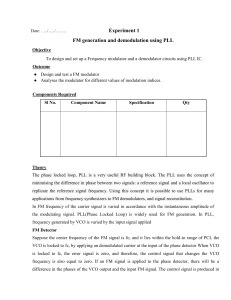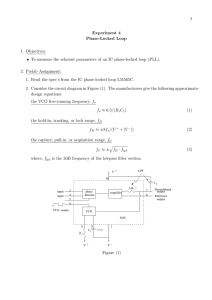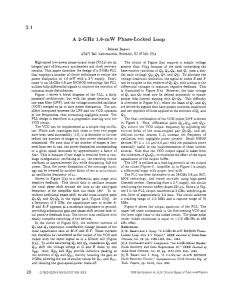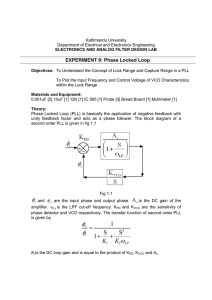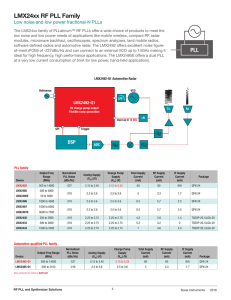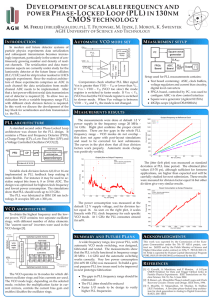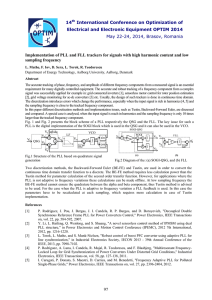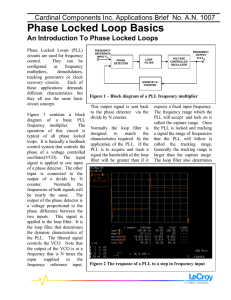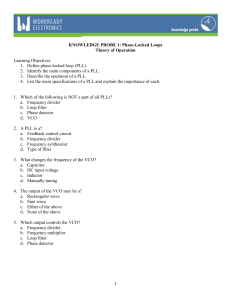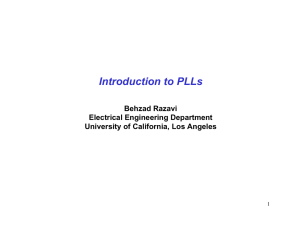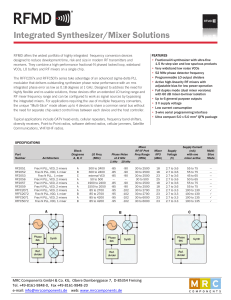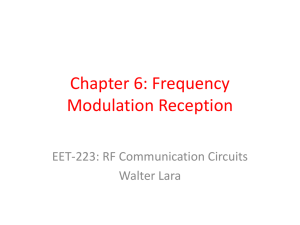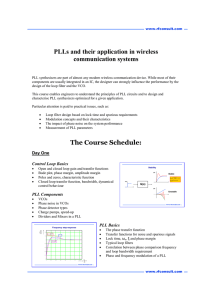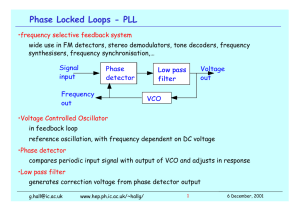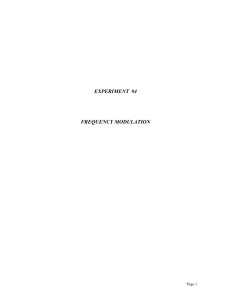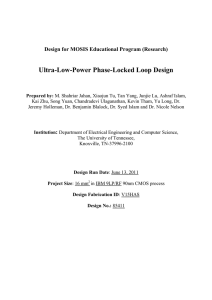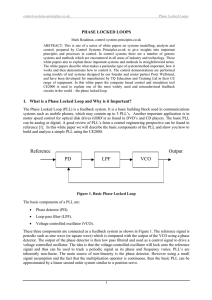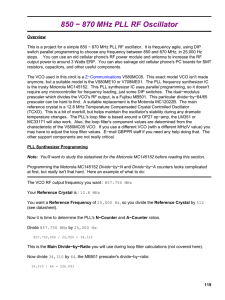Lab Assignment IV: PLL simulation
advertisement
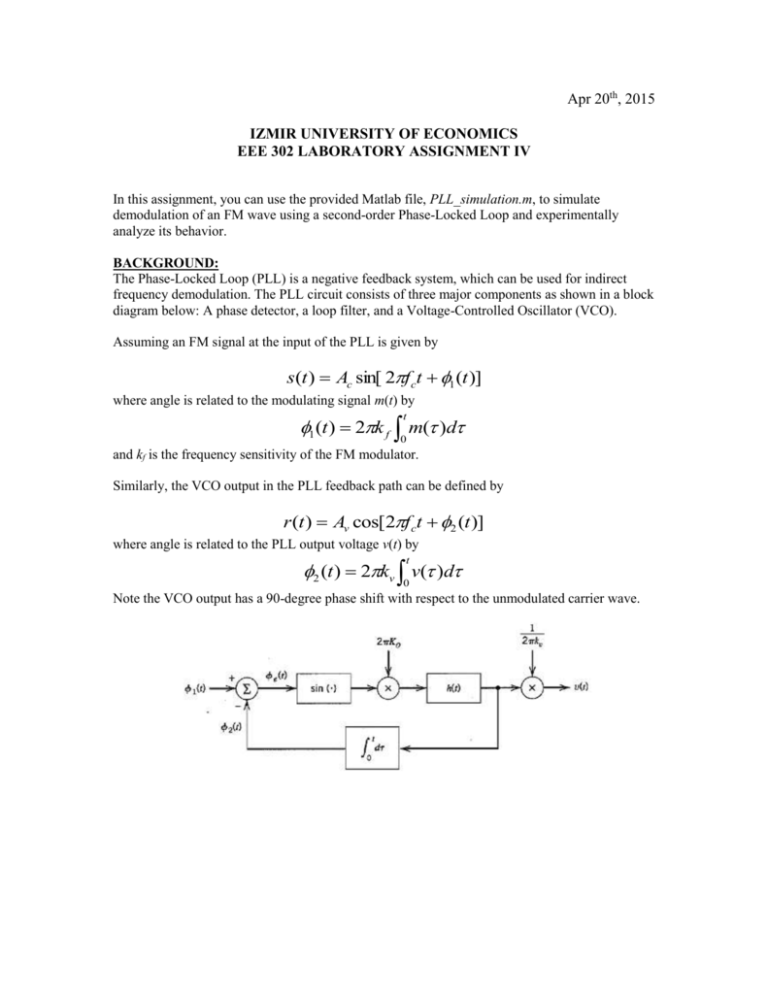
Apr 20th, 2015 IZMIR UNIVERSITY OF ECONOMICS EEE 302 LABORATORY ASSIGNMENT IV In this assignment, you can use the provided Matlab file, PLL_simulation.m, to simulate demodulation of an FM wave using a second-order Phase-Locked Loop and experimentally analyze its behavior. BACKGROUND: The Phase-Locked Loop (PLL) is a negative feedback system, which can be used for indirect frequency demodulation. The PLL circuit consists of three major components as shown in a block diagram below: A phase detector, a loop filter, and a Voltage-Controlled Oscillator (VCO). Assuming an FM signal at the input of the PLL is given by s(t ) Ac sin[ 2f ct 1 (t )] where angle is related to the modulating signal m(t) by t 1 (t ) 2k f m( )d 0 and kf is the frequency sensitivity of the FM modulator. Similarly, the VCO output in the PLL feedback path can be defined by r (t ) Av cos[2f ct 2 (t )] where angle is related to the PLL output voltage v(t) by t 2 (t ) 2kv v( )d 0 Note the VCO output has a 90-degree phase shift with respect to the unmodulated carrier wave. ASSIGNMENT: (1) Develop a Matlab code to simulate demodulation of a single-tone FM wave with 100 kHz carrier (of unit amplitude) and a modulating wave m(t ) 0.2 * sin( 2 1000t ) For the output amplitudes of FM modulator (Ac) and VCO (Av) equal unity, and frequency sensitivities of FM modulator (kf) and VCO (kv) as kf=10 and kv=20: plot the (1) time-domain modulating signal, (2) phase of transmitted signal, (3) phase detector output, and (4) recovered output signal for the initial 5 second time period. (2) Analyze how does the PLL behavior change with respect to the VCO gain kv decrease or increase? Measure and compare the PLL lock-in times for both cases. (3) If the loop filter in part (1) is replaced with simple proportional control (the first order PLL) how is the PLL behavior affected? (4) Determine the maximum modulating frequency for which the PLL tracks the signal? (5) (Bonus- 10 pts) Repeat the same analysis in parts (1)-(4) for the following modulating signal: m(t ) 0.2 * sin( 2 1000t ) 0.3 * cos( 2 500t )

